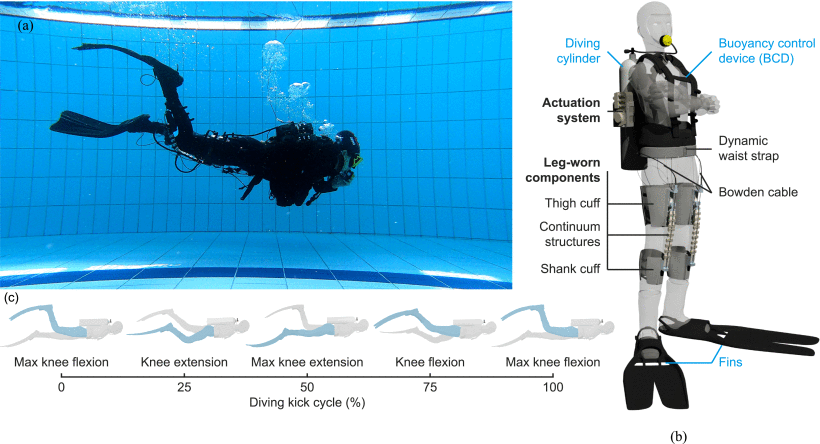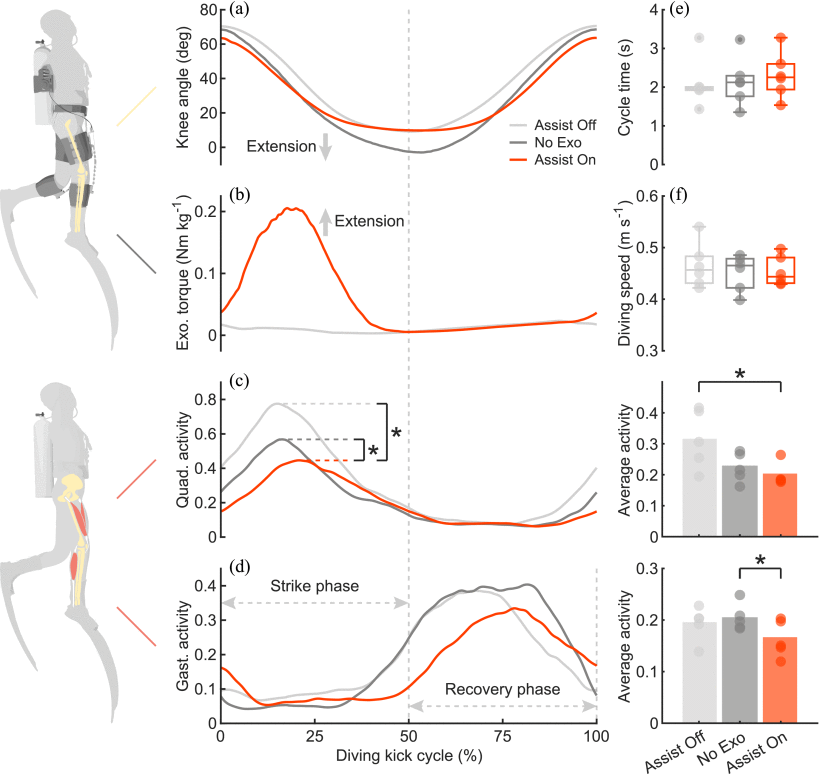Peking University, November 17, 2025: A research team led by Professor Wang Qining from the School of Advanced Manufacturing and Robotics, Peking University, has developed the world’s first portable underwater exoskeleton system that assists divers’ knee movement, significantly reducing air consumption and muscle effort during dives. The findings, published in IEEE Transactions on Robotics on October 14, 2025, open new possibilities for enhancing human performance in underwater environments.
Background
Covering 71% of Earth’s surface, the ocean is a key space for exploration and resource development. Yet, underwater movement requires much more energy than walking on land, as divers must constantly overcome water resistance, limiting their endurance and operational range. While wearable exoskeletons have shown great promise in reducing energy use on land, adapting this technology to underwater conditions has long been a challenge due to distinct biomechanical and environmental constraints.
Why It Matters
The study demonstrates that powered exoskeletons can enhance economy of labor in extreme environments, extending their use beyond terrestrial applications. By lowering divers’ physical burden and oxygen use, such systems could extend dive duration, improve safety, and reduce fatigue, with potential applications in marine research, underwater construction, and diver training.

Fig. 1. Overall design of underwater exoskeleton.
Key Findings
The research team developed a bilateral cable-driven underwater knee exoskeleton that assists divers during the flutter kick. Using motion sensors and force-based control, the system provides real-time assistive torque to the knees. Tests with six experienced divers showed remarkable improvements: When they wore the powered exoskeleton, their air consumption decreased by 22.7%, quadriceps activation by 20.9%, and calf activation by 20.6%, compared to normal diving without the exoskeleton. The divers adapted well to the assistance, displaying natural movement patterns and improved energy economy.

Fig. 2. Main kinetics, kinematics, and muscle activation results.
Future Implications
This breakthrough demonstrates the world’s first portable underwater exoskeleton capable of enhancing diving performance and reducing physical strain. Beyond its immediate applications in marine research and underwater operations, the system also offers new insights into diver training and biomechanics. By extending wearable robotics into underwater environments, the study lays the foundation for future assistive devices that strengthen the connection between humans and the ocean.
*This article is featured in PKU News "Why It Matters" series. More from this series.
Read more: https://ieeexplore.ieee.org/document/11202658
Written by: Akaash Babar
Edited by: Chen Shizhuo
Source: PKU News (
Chinese)

